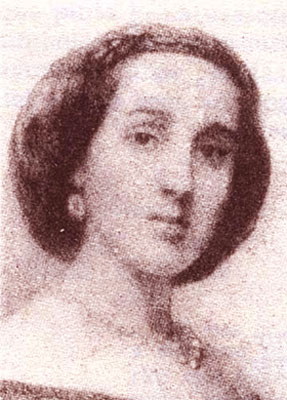2.1.12.1 The narrative of Luisa Pérez de Zambrana (1835 – 1922), her work “The Executioner’s Daughter”

Luisa Pérez Montes de Oca –who acquired the surname Zambrana when she married Ramón Zambrana y Valdés, a prominent doctor and intellectual who would contribute to her literary training and the dissemination of her work– stood out fundamentally for her cultivation of lyrical poetry, in which she achieved a simple but aesthetically solid expression, without the rhetoric of the first romantic period.
Her narrative output has been overlooked in most exegetic attempts at her work, but in general terms, it was endowed with the same attributes of simplicity and naturalness in language and emotional undertones. Most of it appeared in newspaper serials, as was the case with part of her novel “Angélica y Estrella,” chapters of which were published in “El Siglo” (1864) and “El Mercurio” (1876). “La hija del verdugo” (The Executioner’s Daughter) appeared in “Revista del Pueblo” (People’s Magazine) in 1865, and the first part of her novel “Los Gracos” (The Gracos) was published in the Diario de la Marina (Diario de la Marina).
“The Hangman’s Daughter” was one of the narrative pieces that most attracted the public’s attention, perhaps neglected because it had little to do with the situations and locations on the Island. Although the entire plot takes place in Europe, this is only stated because the story has little anchoring in specific territorial aspects and is easily generalizable, both with respect to the death sentence imposed at the beginning on one of the main characters, Sir Carlos Schiler, due to his political ideas, and to the strict division of society into classes, where the nobility occupied absolute preeminence.
In this sense, the aforementioned character comes to question himself: “What pride can he have in the nobility of his blood who has to shed it on the platform of a gallows?” and introduces a questioning of this class division, but it ends when the executioner’s daughter, Olivia, after marrying Sir Carlos Schiler, decides to educate herself, and more than educating herself, to acquire the habits and manners of nobility to live up to her husband.
The novel fits into the aesthetic principles of the second generation of Romantic writers. This is evident in the prison sequence of Karl Schiler, a tragic vision of life based on the proximity of death in the prime of youth, so prevalent in Romanticism. In this sequence, given the author’s expressive simplicity, the heavy adjectival weight that diminishes as the narrative acquires substance.
Here are some elements that shape her perspective on femininity, both physically and morally. Through the character of Olivia, she emphasizes the sacrifice and idolatry of her spouse as a behavioral model, which grants her the ultimate reward of love. The message regarding the need for education in women is positive, although she sees it more as a means of gaining a man’s appreciation.
José Martí, touched by her work but more so by the author’s personality, would affirm: “Luisa Pérez is a pure creature, sensitive to all pain and accustomed to all delicacy and generosity. Her black hair drapes her open temples in waves; her large eyes contain an inexhaustible force of delicate passion and tenderness; perpetual modesty veils her pure and gallant features, and Rafael would have wanted the oval that encloses that noble, serene, and distinguished face for himself. She captivates with her words, and with her gaze she inclines one to affection and respect.”








